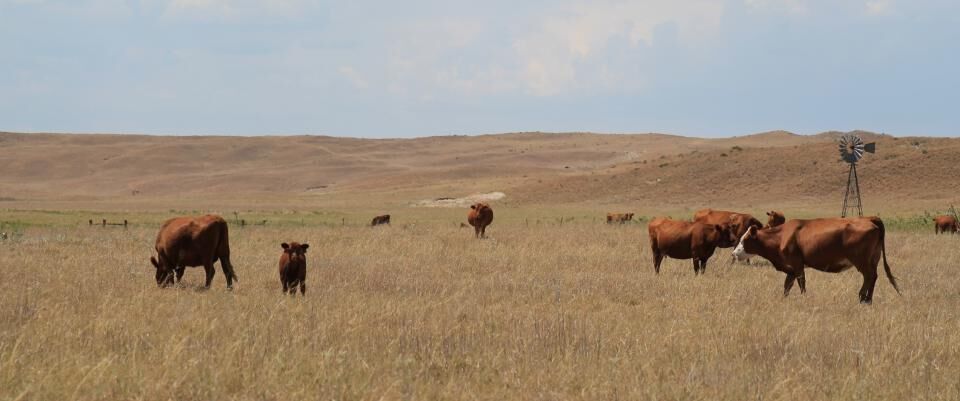Drought conditions have caused significant delays in pasture green-up and dormancy break. As a result, livestock producers may be seeking alternative forages and adjusting stocking rates to compensate for decreased forage production.
The Drought Mitigation Center provides free drought management educational resources.
For example, when forage plants are under drought stress, managers may extend the rest period between grazing cycles. Using rotational grazing along with longer rest periods will allow more plant growth readiness when rains finally come. Overgrazed pastures will also recovery slower during drought if animals continually graze off regrowth.
So, if pasture forage production is limited, what are alternative forage options? In general, annual forages are more water use efficient than perennial grasses. Thus, wheat and rye fields may be greening while grass pastures are still looking brown. With lower soil temperatures, seeded cool-season annuals like oats will provide quicker forage growth. However, drought water use efficiency favors warm-season annual forage grass such as foxtail millet, sudangrass and sorghum-sedan grasses as soils warm.
If alfalfa fields are lacking height for haying, then grazing the alfalfa may be a way to extend pasture rest. Note that drought impacted alfalfa is less likely to cause bloat problems with grazing cattle.
Grazing wheat or rye may also extend pasture rest. If grain harvest is still a goal, then cattle should be removed from grazing the wheat prior to the hollow stem growth stage, since immature wheat heads may be eaten off. However, this forage option may be gone within the next two weeks. Grazing rainfed or dryland corn could be an option later if our dry conditions continue into the summer months.




